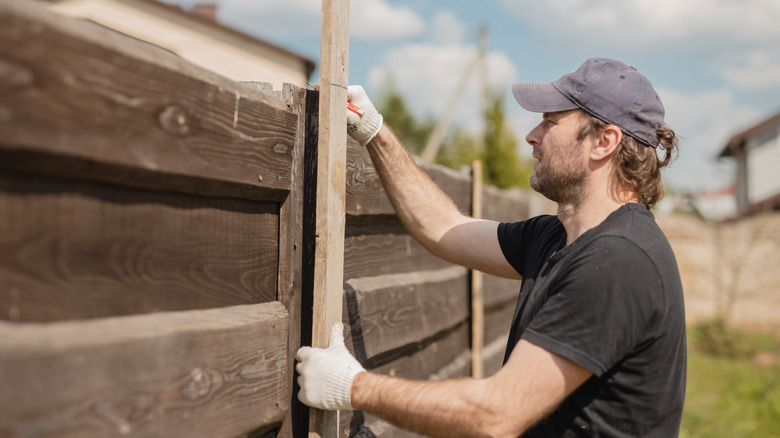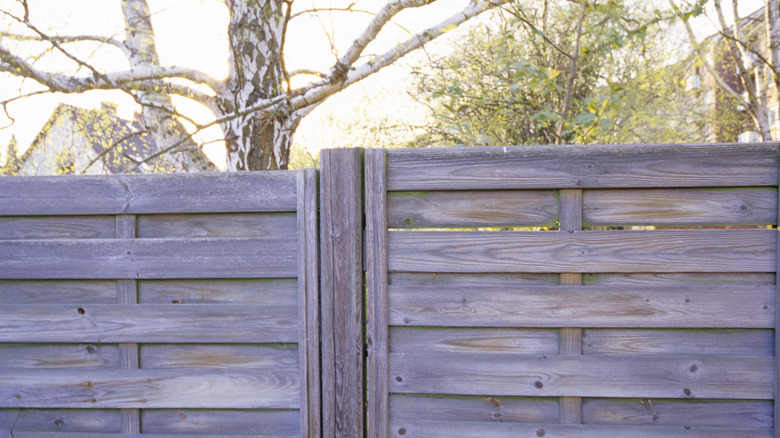The Stylish Alternative To A Basic Wood Fence
If you want to increase your yard's privacy, you may be considering installing a fence. If this is the case, it's a good idea to become familiar with your options. As far as materials go, you can choose from vinyl, metal, or wood. When it comes to styles, you have more choices, but common preferences include picket, stockade, and privacy panels, or variations of any of these. If you've settled on wood for your fence material, there is another opportunity you might be interested in — horizontal fence panels. Horizontal fences are, as the name suggests, fences where the wooden slats run horizontally instead of vertically, giving the fence an almost "woven" look. They offer the same level of privacy as solid wood panels or a stockade-style fence, but with a unique pattern that adds an element of depth and interest. These panels look great from outside your yard, and are just as beautiful from the inside.
Horizontal panels can be installed to provide privacy for your entire yard or implemented strategically to enhance either targeted privacy or your yard's aesthetic. Since these fence panels are points of interest on their own, they are perfect for places in your yard that could use a touch of beauty, like for enclosing a garden seating area or for enhancing your patio's privacy. If you are thinking about your horizontal wooden fence options for your yard's perimeter, there are several factors to consider before deciding if this type of fence is right for you.
The pros and cons of horizontal fences
Horizontal fences can be an excellent choice for homeowners, offering not only aesthetic appeal but also durability. Because the only contact the fence has with the ground is at the posts, moisture won't rot the wood as fast as wood fencing that runs from the ground up. Another reason horizontal fencing is more durable is that the boards are less exposed to weather elements than those of vertical fences. Horizontal fences can also feel less confining due to the slight gaps in the boards.
Of course, just as with any amazing yard decor addition, there are downsides to this fencing type. The first is the cost. Horizontal fences tend to cost more money than regular vertical wooden fences. The reason for this is that, unlike vertical fencing, where slats can be added to an existing frame, horizontal fencing has to be purchased and installed in pieces or built on-site. Another con of horizontal fences is that they don't provide the same level of safety as their vertical counterparts. The horizontal pieces of lumber provide a way for intruders to climb up and over the fence easily. Lastly, horizontal fences are not ideal for sloped yards because there will likely be space between the ground and the panels as the yard slopes or with changes in the terrain. This is in contrast to vertical fences, where the slats can be custom-cut to suit the yard.

